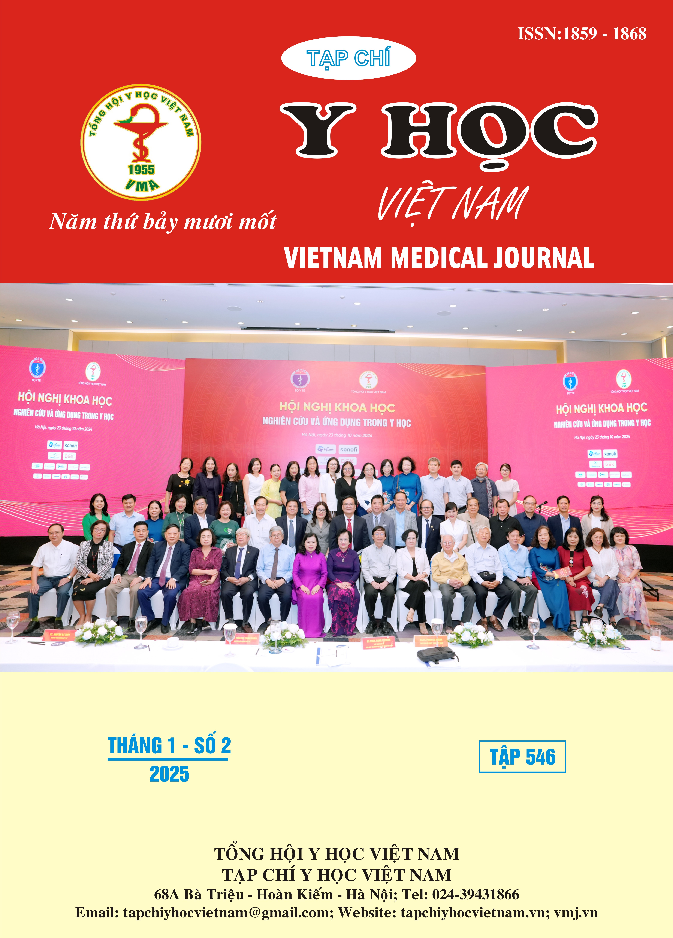RESULTS OF ARTERY PRESSURE COMPRESSION IN CARDIVASCULAR CATHETERIZATION LABORATORY AT HANOI MEDICAL UNIVERSITY HOSPITAL
Main Article Content
Abstract
Objective: To evaluate the results of arterial puncture site compression and influencing factors at the Cardiovascular Center, Hanoi Medical University Hospital. Methods: Cross-sectional descriptive study on all patients who underwent intervention from August 2023 to May 2024. Results: 88.5% of patients had no complications after arterial puncture, the rate of complications monitored included hematoma: 7.8%, bleeding: 2.4%, pseudoaneurysm: 1.7%, embolism: 2.0%. Risk factors affecting the results of arterial puncture include gender, underlying vascular disease, puncture site, instrument size, and procedure time. Conclusion: The technical procedure for controlling bleeding at the arterial puncture site has a high success rate but choosing the appropriate puncture site and catheter size also needs to be carefully considered.
Article Details
Keywords
pressure compression, complications, arterial puncture site
References
2. Trần Bá Hiếu, Trần Ngọc Cầm, Vũ Thị Ngọc Ánh, Huỳnh Thị Nhung. Tỷ lệ biến chứng mạch máu tại chỗ sau chụp và/hoặc can thiệp động mạch vành tại đơn vị chăm sóc mạch vành - C7 Viện Tim mạch - Bệnh viện Bạch Mai. Tạp chí Y học Việt Nam. 2022;527.
3. Jolly SS, Yusuf S, Cairns J, et al. Radial versus femoral access for coronary angiography and intervention in patients with acute coronary syndromes (RIVAL): a randomised, parallel group, multicentre trial. Lancet. 2011;377(9775):1409-1420.
4. Valgimigli M. Design and rationale for the Minimizing Adverse haemorrhagic events by TRansradial access site and systemic Implementation of angioX program. American heart journal. 2014;168(6):838-845.e836.
5. Le May M, Wells G, So D, et al. Safety and Efficacy of Femoral Access vs Radial Access in ST-Segment Elevation Myocardial Infarction: The SAFARI-STEMI Randomized Clinical Trial. JAMA cardiology. 2020;5(2):126-134.
6. Ferrante G, Rao SV, Jüni P, et al. Radial Versus Femoral Access for Coronary Interventions Across the Entire Spectrum of Patients With Coronary Artery Disease: A Meta-Analysis of Randomized Trials. JACC Cardiovascular interventions. 2016;9(14):1419-1434.
7. Mehta SR, Jolly SS, Cairns J, et al. Effects of radial versus femoral artery access in patients with acute coronary syndromes with or without ST-segment elevation. Journal of the American College of Cardiology. 2012;60(24):2490-2499.


